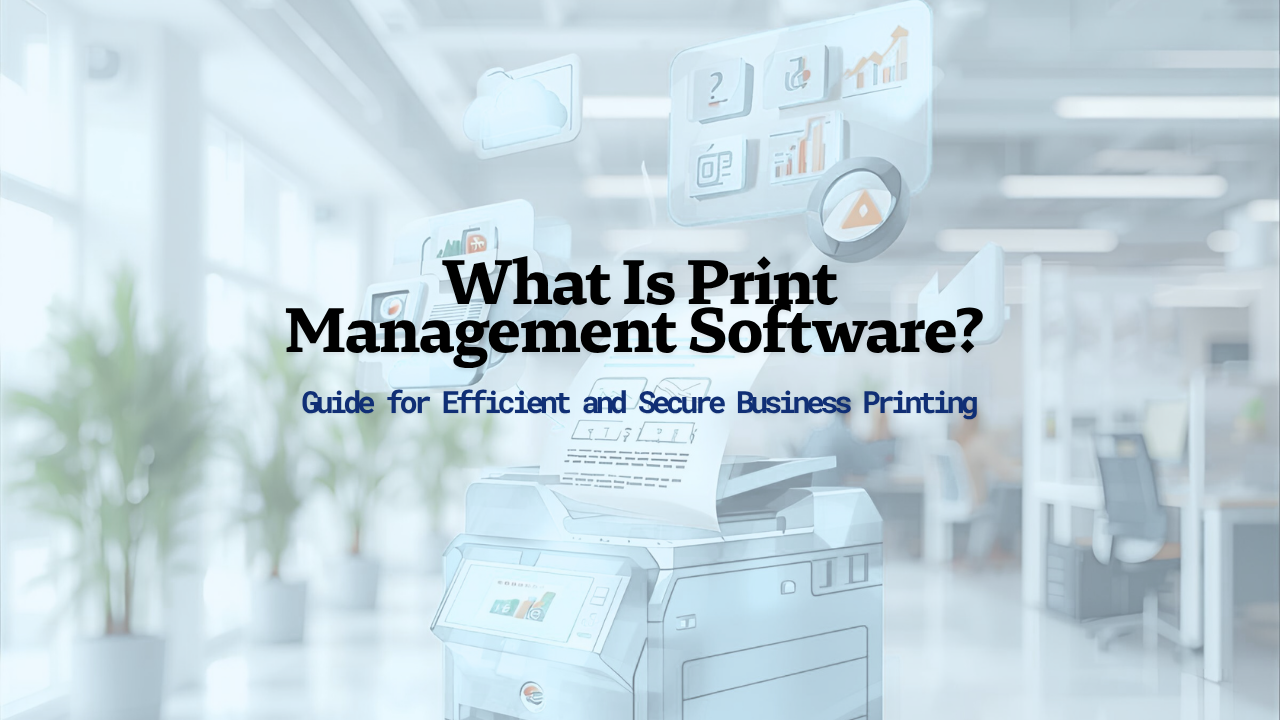Emerging Trends in Modern IT Management
The rapid evolution of technology has significantly transformed how organizations manage their IT infrastructure. At the core of this transformation lies the integration of Artificial Intelligence (AI) and automation, which are reshaping traditional practices, driving efficiency, and enabling proactive operational strategies. As these technologies become more pervasive, understanding their fundamental concepts, benefits, and practical applications is crucial for IT leaders aiming to stay competitive and compliant.
Fundamentals of AI and Automation in IT Management
What is included in IT management?
IT management involves overseeing an organization's technology resources to ensure they support business goals efficiently. It includes planning, organizing, and maintaining hardware, software, networks, and security systems. Key activities comprise incident management, problem resolution, change and release management, and asset lifecycle oversight. Tools like IT Service Management (ITSM) platforms such as Freshservice facilitate these processes, enabling quick resolution and continuous improvement.
One critical element of IT management is asset management. This involves tracking and optimizing physical and digital assets via Configuration Management Databases (CMDBs). These tools provide real-time insights into hardware, software, virtual, and cloud infrastructure, helping organizations reduce costs, improve security, and enhance service quality.
Overall, IT management aims to ensure reliability, security, and alignment with strategic objectives, constantly evolving with innovative solutions like AI to address increasing complexity and demands.
How is AI used in IT management?
AI is transforming how organizations manage IT landscapes by automating routine and complex tasks, enabling proactive decision-making, and enhancing operational efficiency. Machine learning algorithms analyze vast amounts of system data to detect anomalies, predict failures, and recommend preventative actions.
For instance, AI-driven tools perform continuous monitoring, automatically identifying issues before they affect services. AI also automates responses through intelligence-driven workflows, reducing manual intervention and speeding up resolution times.
Cybersecurity benefits significantly from AI with real-time threat detection and adaptive defense mechanisms. Generative AI advances assist in content creation, troubleshooting, and support functions, filling skill gaps and improving service levels.
Furthermore, AI supports infrastructure optimization by analyzing resource utilization patterns, forecasting demand, and automating capacity adjustments. As AI integrates deeper into IT management, it drives a shift towards autonomous systems capable of self-monitoring and self-healing.
Although beneficial, deploying AI in IT environments requires addressing ethical considerations, governance, data privacy, and ensuring that automation aligns with organizational policies.
Essential tools and frameworks for implementation
Implementing AI and automation in IT management hinges on selecting the right tools and frameworks. Several platforms lead the market, offering functionalities from anomaly detection to process orchestration:
| Tool/Framework | Primary Function | Integrations | Notable Features |
|---|---|---|---|
| Eyer.ai | Anomaly detection, root cause analysis | APIs, cloud services | Infrastructure observability, automated alerting |
| Microsoft Azure AI | Predictive analytics, AI services | Cloud ecosystem | Seamless integration with existing enterprise systems |
| Red Hat Ansible | Automation workflows | Linux/Cloud environments | Simplifies infrastructure and configuration management |
| BMC Helix | ITSM, automation, AI-enhanced tooling | Broad enterprise integrations | Cognitive service capabilities, proactive operations |
| IBM Watson | Data analysis, NLP, predictive analytics | Cloud, on-premise | Strong in unstructured data processing |
Choosing suitable tools requires considering compatibility with existing infrastructure, scalability, ease of integration, and support for AI functionalities.
Emerging trends include the adoption of no-code/low-code platforms, hyperautomation, and integration with edge computing and IoT. These broaden automation capabilities, making it accessible for various skill levels and operational contexts.
By leveraging these tools and frameworks, organizations can streamline IT operations, improve service quality, and foster innovation—paving the way for a smarter, more autonomous IT environment.
Transformative Role of AI in Modern IT Operations

How AI enhances IT management practices
Artificial Intelligence (AI) is revolutionizing how information technology (IT) is managed today. It provides tools for continuous system monitoring, anomaly detection, and infrastructure optimization. AI systems automatically analyze vast amounts of data from diverse sources like cloud services, IoT devices, and enterprise networks, enabling IT teams to maintain optimal performance proactively.
AI-driven platforms, such as Eyer.ai, facilitate real-time observability, automated alerting, and root cause analysis. These tools help manage complex IT environments by quickly identifying issues before they escalate, reducing downtime and maintenance costs.
Artificial Intelligence also simplifies routine tasks through automation. From patch management and incident responses to user provisioning and security updates, AI reduces manual intervention, freeing IT staff to focus on strategic initiatives.
Role of AI in proactive and predictive maintenance
One of AI's significant contributions to IT management is proactive and predictive maintenance. By analyzing sensor data and system logs, AI models can forecast hardware failures and software glitches that might otherwise go unnoticed.
Predictive maintenance extends equipment lifespan and minimizes unplanned downtime. For instance, a mining company using AI to analyze sensor data reported a 30% reduction in system downtime. Similarly, AI-powered analytics identify potential security threats by monitoring network traffic in real-time, allowing automatic responses to threats and vulnerabilities.
AI enhances capacity planning and resource allocation by predicting future system loads and user demands. This foresight supports IT teams in scaling infrastructure efficiently and avoiding resource shortages.
Automation of routine tasks and decision-making
Automating routine operational tasks is at the core of AI's impact. AI tools like Robotic Process Automation (RPA) bots handle repetitive activities such as user onboarding, password resets, and system updates. Deloitte, for example, reduced report preparation times from days to hours through AI automation.
AI also drives smarter decision-making. Advanced analytics, including real-time insights and forecasting models, guide IT leaders in resource allocation, capacity planning, and risk management. These insights enable organizations to make faster, more accurate decisions aligned with business goals.
Furthermore, AI-integrated Support Ticket Management systems automatically prioritize, route, and suggest solutions for tickets, improving response times and customer satisfaction.
How AI plays a role in ITSM
AI's role in IT Service Management (ITSM) is transformative. It automates basic support functions like ticket categorization, prioritization, and resolution, significantly boosting efficiency. Virtual agents and chatbots support users around the clock, providing instant assistance and freeing human agents for more complex issues.
AI analytics shed light on system performance trends, user support patterns, and workflow bottlenecks. This enables IT teams to proactively address potential problems before they impact users.
Personalized support is another benefit, with AI tailoring responses based on historical interactions. These capabilities not only streamline workflows but also improve user satisfaction.
Overall, AI accelerates service delivery, ensures consistency, and enhances scalability, making IT support more cost-effective and responsive.
Future Outlook
The future of AI in IT management involves integrating emerging technologies like edge computing and serverless architectures. Greater transparency and explainability of AI decisions will build trust and facilitate better governance.
Ultimately, AI will continue automating routine tasks, providing predictive insights, and empowering IT teams to focus on strategic initiatives. This evolution will help organizations adapt swiftly to technological changes, maintain competitive advantage, and ensure resilient, efficient IT operations.
Benefits and Operational Advantages of AI and Automation
How does AI and automation contribute to cost reduction and increased efficiency?
AI and automation significantly transform operational workflows in IT, leading to notable cost savings and efficiency improvements. By automating routine and repetitive tasks such as system monitoring, patch management, incident response, and user provisioning, organizations reduce the need for manual oversight and minimize human error.
Automated processes enable faster execution times, which accelerates operational cycles and reduces operational costs. For example, RPA (Robotic Process Automation) can handle repetitive tasks like report generation or data entry within hours, replacing days-long manual efforts. Deloitte’s implementation of RPA reduced report preparation time from days to hours, exemplifying substantial productivity gains.
Additionally, AI-driven predictive analytics facilitate proactive maintenance, thereby preventing costly system failures and downtime. In the manufacturing sector, AI-based predictive maintenance reduced downtime by up to 30%, saving millions in lost revenue.
What about enhancing security and compliance?
AI contributes to stronger security measures by enabling real-time threat detection, adaptive cybersecurity, and automatic incident response. AI systems analyze vast amounts of data from network traffic, user behavior, and system logs to identify anomalies indicative of cyber threats or insider threats. These intelligent systems can learn and adapt to new emerging threats faster than traditional methods.
For instance, AI-powered cybersecurity tools continuously monitor for suspicious activity and automatically respond to mitigate risk, minimizing the window of vulnerability. AI’s capability to analyze unstructured data, including emails and social media, helps in early detection of security breaches.
In terms of compliance, AI automates policy enforcement, data governance, and audit trail management. Automated compliance checks and reporting ensure organizations adhere to regulatory standards without extensive manual effort, reducing the chance of penalties or compliance failures.
How does AI improve decision-making and resource utilization?
AI enhances decision-making by turning large volumes of data into actionable insights in real time. Advanced analytics, including predictive and prescriptive analytics, support IT leaders in capacity planning, resource allocation, and strategic initiatives.
Through AI, organizations can forecast future demand, optimize resource distribution during peak loads, and better utilize hardware and software assets. This data-driven approach results in efficient resource deployment, minimized waste, and cost-effective scaling.
An example includes AI’s role in demand forecasting within supply chains, where it reduces forecasting errors by up to 50% and cuts inventory shortages by up to 65%. Such insights enable companies to adjust inventories proactively, avoiding overstock or stockouts.
Furthermore, AI-powered IT management tools support scalable growth by automating support and maintenance activities, freeing up IT teams to focus on innovation and strategic projects. AI-driven analytics also assist in trend analysis, allowing predictive planning of future technological needs.
How operational advantages translate into broader business value
The integration of AI and automation into IT operations fosters agility, resilience, and competitiveness. Automated workflows ensure continuous and reliable system uptime, supporting customer satisfaction and business continuity.
Cost reductions stem from lower labor costs, reduced downtime, and optimized resource use, which collectively improve profit margins. Enhanced security and compliance prevent costly breaches and regulatory fines, safeguarding organizational reputation.
Decision-making processes become more informed and timely, enabling organizations to respond swiftly to market changes, technological developments, or operational issues. This agility bolsters innovation and long-term strategic positioning.
| Advantage Area | Description | Numerical Impact / Example |
|---|---|---|
| Cost Savings | Automation reduces manual work, speeds processes | Deloitte: report prep from days to hours |
| Downtime Reduction | Predictive maintenance prevents failures | Up to 30% reduction in mining downtime |
| Security Enhancements | Real-time threat detection and response | Continuous monitoring and automatic mitigation |
| Inventory Optimization | AI forecasts demand, reduces shortages | Up to 65% reduction in stockouts |
| Resource Utilization | Better allocation based on data insights | AI-driven analytics improve asset use |
In summary, AI and automation deliver operational benefits that not only cut costs and accelerate performance but also enhance security, compliance, and strategic decision-making. As technology evolves, these advantages will continue to expand, shaping the future landscape of IT management.
Current Trends and Emerging Technologies in AI-Driven IT Management

How is AI being integrated with emerging technologies like edge computing and serverless architectures?
The landscape of IT management is rapidly evolving with the integration of artificial intelligence (AI) into cutting-edge technologies such as edge computing and serverless architectures. AI enhances these platforms by enabling real-time processing and decision-making close to the data source, reducing latency and improving responsiveness.
Edge computing pushes data processing closer to where data is generated, such as IoT devices and sensors. AI algorithms deployed at the edge facilitate immediate analysis, anomaly detection, and autonomous action, which is crucial in environments where speed and local decision-making are vital.
Serverless architectures, on the other hand, allow organizations to run applications and services without managing servers, offering scalability and cost-efficiency. AI integrates into serverless models to automate resource allocation, optimize workflows, and predict system loads, ensuring seamless scalability and operational resilience.
This synergy between AI, edge computing, and serverless architectures results in more agile, efficient, and intelligent IT systems capable of supporting complex workloads and emerging digital demands.
Why are hyperautomation, nanocodes, and no-code/low-code platforms gaining prominence?
The adoption of hyperautomation, nanocodes, and no-code/low-code platforms signifies a shift towards democratizing automation and reducing reliance on specialized technical skills. Hyperautomation involves combining AI, RPA, and other automation tools to automate complex business and IT processes end-to-end.
Nanocodes and no-code/low-code platforms enable users with minimal coding knowledge to design, deploy, and manage automation workflows. This accessibility accelerates digital transformation, empowering business users to implement solutions swiftly without extensive programming expertise.
Hyperautomation, enhanced by these platforms, helps organizations streamline operations, improve accuracy, and free up IT teams to focus on strategic initiatives. As a result, automation becomes more scalable and adaptable to various operational needs.
How is AI advancing security automation and cyber defense?
AI plays a pivotal role in strengthening cybersecurity by enabling advanced automation of threat detection and response. AI-powered security tools continuously monitor networks, systems, and data for anomalies and signs of malicious activity.
Machine learning models analyze vast datasets to identify novel threats and adapt in real-time, providing dynamic defense mechanisms. Automated response systems can isolate affected systems, block intrusion points, and mitigate attacks with minimal human intervention.
Furthermore, AI facilitates vulnerability management by prioritizing risks based on threat intelligence and past attack patterns. This proactive approach helps organizations stay ahead of cybercriminals and maintain a robust security posture.
What are the future development trajectories of AI and automation in IT?
The future of AI and automation in IT is poised for significant advancements, driven by increasing integration with emerging technologies and evolving threats. Continued development in areas like autonomous systems and intelligent orchestration will lead to more self-managing compute environments.
Emerging trends include the proliferation of generative AI and agentic AI, which can create content, automate complex decision-making, and operate independently.
Organizations will also prioritize transparency, explainability, and ethical AI deployments to build trust and ensure compliance. As AI models become more sophisticated, challenges related to data privacy, bias, and accountability will require focused attention.
Moreover, the expansion into nascent areas like quantum computing and nanotechnology will further enhance AI capabilities, paving the way for hyperintelligent IT ecosystems.
How are these trends shaping the future of IT management?
These technological integrations and advancements are transforming IT management from reactive to proactive and autonomous. Organizations will increasingly rely on AI-driven insights to predict failures, optimize resources, and automate routine and complex tasks.
This shift will reduce operational costs, improve system reliability, and enable IT teams to focus on strategic initiatives that foster innovation and digital growth.
The trend toward smarter, more autonomous workflows supported by AI will also improve scalability, security, and compliance, making IT infrastructure more resilient and adaptable to future challenges.
| Aspect | Current State | Future Outlook |
|---|---|---|
| Technology Integration | AI with edge and serverless | Enhanced real-time analytics and decision-making |
| Automation Platforms | No-code/low-code, nanocodes | Fully autonomous workflows and hyperautomation |
| Security | AI-powered threat detection | Predictive and autonomous cybersecurity systems |
| Development Focus | Scalability, transparency | Trustworthy AI, explainability, quantum computing |
| Impact on Management | Manual, reactive | Autonomous, predictive, and strategic decision-making |
By harnessing these trends, IT management will become more efficient, secure, and aligned with modern business landscapes, ensuring resilience and competitive advantage in a digital-first world.
Practical Applications and Real-World Implementations of AI
How is AI applied in real-world IT management scenarios?
AI-driven solutions are now integral to many aspects of IT management, exemplifying their utility through tools such as AIOps, predictive maintenance, quality control, and supply chain optimization. These applications showcase how AI enhances operational efficiency, anticipates issues, and supports strategic decision-making.
Examples like AIOps, predictive maintenance, quality control, and supply chain optimization
AIOps: Artificial Intelligence for IT Operations (AIOps) combines big data and machine learning to automate event correlation, anomaly detection, and root cause analysis. For example, Electrolux successfully reduced IT issue resolution time from weeks to just an hour thanks to AIOps, saving over 1,000 hours annually.
Predictive Maintenance: This approach uses AI to analyze sensor data to forecast hardware failures or software glitches before they occur. A mining company, for instance, decreased downtime by up to 30% through predictive analytics, ensuring assets remained operational longer and downtime was minimized.
Quality Control: AI-based models can identify defects in products by analyzing data from cameras, sensors, or drones in real-time. An automobile manufacturer achieved 97% defect detection accuracy, significantly improving quality assurance processes.
Supply Chain Optimization: AI enhances logistics and inventory management by processing vast datasets to forecast demand, optimize routes, and ensure transparency. IBM's AI-driven solutions helped achieve USD 160 million in savings during the COVID-19 pandemic and maintained a 100% order fulfillment rate.
How does AI impact operational workflows?
AI integration automates routine and complex tasks alike, transforming workflows. From automating software updates, troubleshooting, and user onboarding to proactive monitoring and security threat detection, AI reduces manual effort, helps prevent disruptions, and improves overall efficiency. It allows IT teams to focus on strategic initiatives rather than repetitive tasks.
Case studies illustrating AI's business value
- Electrolux: Reduced IT resolution times significantly with AIOps, achieving faster fixes and resource savings.
- Mining Industry: Enhanced asset availability and reduced downtime via predictive analytics.
- Automobile Manufacturing: Improved defect detection, boosting product quality.
- IBM and COVID-19: Led to substantial cost savings and guaranteed fulfillment rates through supply chain AI solutions.
| Application Area | Example | Result | Impact Details |
|---|---|---|---|
| AIOps | Electrolux | Resolution time cut from weeks to hours | Automated anomaly detection and root cause analysis |
| Predictive Maintenance | Mining industry | Up to 30% less downtime | Sensor data analysis to forecast failures |
| Quality Control | Auto manufacturing | 97% defect detection accuracy | Real-time defect identification using AI models |
| Supply Chain | IBM | USD 160 million savings | AI-driven logistics optimization |
Future outlook and ongoing trends
The future of AI in IT management is characterized by deeper integration with emerging technologies like edge computing and serverless architectures. Advances in transparency and explainability of AI decisions will help build trust and facilitate compliance.
Moreover, organizations are increasingly adopting no-code/low-code platforms, hyperautomation, and security automation, making AI-driven workflows more accessible and intelligent.
Summing up the impact of AI in IT and operational environments
AI applications such as predictive analytics, anomaly detection, and intelligent automation are revolutionizing how companies manage their infrastructure, supply chain, and operational workflows. As more organizations embrace these innovations, their ability to automate, predict, and optimize will become central to maintaining competitive advantage and operational resilience.
Tools, Systems, and Solutions Supporting AI and Automation in IT
What are the essential tools for AI management?
Managing AI in IT environments requires specialized tools that support deployment, monitoring, and responsible use. One prominent example is the AI Management Essentials (AIME), a comprehensive self-assessment platform designed to help organizations evaluate their AI practices.
AIME guides organizations through evaluating their internal processes, risk management strategies, and transparency measures. It aligns with international standards like ISO/IEC 42001, the NIST AI framework, and the European Union AI Act, ensuring compliance and responsible AI use.
This tool is especially helpful for small to medium-sized enterprises and public sector organizations. It contains detailed questionnaires that cover important topics such as data quality, bias mitigation, impact assessments, algorithmic fairness, and third-party integrations.
By using such tools, organizations can establish effective governance over AI systems, foster transparency, and build trust with stakeholders. They help identify gaps in AI deployment, improve risk management, and ensure ethical standards are met.
Overall, these management tools are vital for organizations aiming to harness AI's power responsibly and sustainably, providing a structured approach to implementation and ongoing oversight.
Governance, Ethical, and Regulatory Considerations in AI for IT

AI ethics and fairness
As AI becomes increasingly integral to IT management, organizations face the challenge of ensuring ethical use and fairness. Bias in AI algorithms can Lead to unfair decision-making, affecting everything from resource allocation to security protocols. To combat this, companies must implement practices that scrutinize and mitigate biases, fostering equitable outcomes. Establishing clear guidelines that promote ethical AI development and deployment is essential.
Transparency and explainability of AI decisions
Transparency ensures that AI-driven actions are understandable and traceable. In IT environments, explainability is vital for trust and accountability, especially when AI systems make critical decisions like incident prioritization or security responses. Techniques such as model interpretability and clear reporting enable IT teams and stakeholders to comprehend how AI models arrive at specific conclusions, thus facilitating informed oversight and compliance.
Data privacy, security, and compliance
Handling vast amounts of operational data necessitates strict adherence to data privacy and security standards. AI systems process sensitive information, making compliance with regulations like GDPR and HIPAA non-negotiable. Organizations must implement robust data governance policies, encrypt data at rest and in transit, and regularly audit AI systems to prevent breaches. Protecting user and organizational data also aligns with ethical commitments and legal obligations.
Challenges and best practices for responsible AI use
Integrating AI into IT management requires balancing innovation with responsibility. Key challenges include managing bias, maintaining transparency, ensuring data privacy, and addressing regulatory demands. Best practices encompass establishing comprehensive governance frameworks, engaging in continuous monitoring, and fostering a culture of responsible AI use. This approach not only mitigates risks but also builds confidence among users and stakeholders.
The future of AI governance in IT
Looking ahead, AI governance will evolve to incorporate international standards and best practices, emphasizing transparency, fairness, and accountability. Regulatory agencies are expected to develop clearer guidelines, prompting organizations to adopt proactive measures. Increased focus on explainability, ethical audits, and compliance mechanisms will help ensure AI systems support sustainable and trustworthy IT operations.
| Aspect | Consideration | Implementation Insights |
|---|---|---|
| Ethical AI | Fairness and Non-discrimination | Regular bias assessments and diverse training data |
| Transparency | Decision traceability | Use of explainable AI models and reporting |
| Data Privacy | Confidentiality and security | Encryption, access controls, compliance audits |
| Regulatory Compliance | Legal adherence | Continuous monitoring of evolving regulations |
By prioritizing these aspects, organizations can harness the benefits of AI-driven IT management while upholding ethical standards and legal compliance, fostering sustainable growth and stakeholder trust.
Impact of AI on Leadership and Organizational Strategy in IT

How does AI influence decision-making processes in IT organizations?
AI significantly enhances decision-making within IT management by providing real-time, data-driven insights. Advanced analytics and predictive models analyze vast datasets to identify patterns, forecast potential issues, and suggest optimal solutions. For example, AI-powered tools can predict hardware failures or software glitches before they happen, enabling proactive maintenance.
Moreover, AI supports strategic planning by offering forecasts on resource utilization, capacity needs, and emerging technology trends. These capabilities allow IT leaders to make informed decisions swiftly, reducing reliance on intuition and minimizing risks associated with guesswork. Automated decision-making processes also improve efficiency by handling routine evaluations, freeing managers to focus on more complex strategic initiatives.
In addition, AI-driven cybersecurity systems continuously monitor networks for anomalies, enabling immediate response to threats. This real-time monitoring strengthens security posture and enhances an organization’s resilience against cyber-attacks.
How can organizations align AI and automation initiatives with their broader goals?
Aligning AI and automation with organizational objectives requires a clear understanding of both business priorities and technological capabilities. Organizations should start by defining specific goals—such as improving operational efficiency, enhancing customer experience, or reducing costs—and then identify how AI solutions can support these aims.
Implementing a structured approach involves assessing current workflows to pinpoint repetitive or manual tasks suitable for automation. Once identified, organizations can select AI tools tailored to their needs, ensuring these solutions integrate seamlessly with existing systems.
Communication across departments is essential to foster collaboration and ensure alignment. Leadership must articulate the strategic value of AI initiatives, setting measurable targets and providing resources for training and change management.
When AI initiatives directly contribute to overarching goals, they promote scalability and adaptability while minimizing resistance. Regular evaluation of outcomes helps refine strategies and ensures ongoing alignment with evolving business needs.
How can organizations foster a culture of innovation and manage change effectively?
Fostering innovation in the context of AI and automation involves cultivating an open mindset toward technological change and continuous learning. Leaders should encourage experimentation by providing teams with resources and possibilities to test new tools without fear of failure.
Change management is critical to successful AI adoption. Organizations should communicate transparently about the benefits, challenges, and expectations associated with AI initiatives. Providing comprehensive training programs helps staff acquire necessary skills, reduce resistance, and build confidence in new processes.
Creating cross-functional teams promotes diverse perspectives, driving innovative solutions tailored to organizational challenges. Recognizing and celebrating quick wins can motivate staff and demonstrate tangible benefits.
Furthermore, establishing governance frameworks ensures ethical use of AI, addresses data privacy concerns, and maintains transparency in decision-making processes. Emphasizing ethical AI practices boosts trust among employees and stakeholders.
In sum, nurturing a culture that values innovation, paired with effective change management strategies, accelerates AI integration, leading to competitive advantage and organizational agility.
| Aspect | Focus | Details |
|---|---|---|
| Decision-Making | Data-Informed Strategies | AI provides real-time insights and predictive forecasts, enhancing strategic choices |
| Organizational Alignment | Goal-Driven AI Deployment | Ensuring AI initiatives support core business objectives |
| Change Management | Cultivating Innovation | Promoting experimentation, training, and ethical practices |
By embracing AI's potential thoughtfully, organizations can transform their leadership approach, enhance operational resilience, and stay ahead in an increasingly digital landscape.
Challenges, Risks, and Strategies for Successful Adoption

What are the challenges and strategies for adopting and integrating AI and automation in IT environments?
Implementing AI and automation within IT systems offers significant advantages, such as improved efficiency, predictive maintenance, and smarter decision-making. However, organizations face several hurdles that can hinder successful deployment.
One of the primary challenges is managing data quality issues and data silos. Many legacy systems store data in incompatible formats or isolated repositories, making it difficult for AI algorithms to access comprehensive, accurate datasets necessary for reliable insights.
Another significant obstacle is the skills gap. The rapid evolution of AI and machine learning technologies requires specialized expertise that many organizations lack. This skills shortage can delay projects and reduce the effectiveness of AI initiatives.
Integration challenges also pose risks, especially when aligning new AI systems with existing legacy infrastructure. Compatibility issues can lead to increased costs and operational disruptions.
Vendor lock-in is an additional concern. Relying heavily on specific vendors’ proprietary solutions may limit flexibility and bargaining power, risking future scalability and adaptability.
Ethical considerations are increasingly prominent in AI adoption. Concerns about algorithmic bias, transparency, and decision accountability require organizations to adopt responsible AI practices. Regulatory compliance adds further complexity, necessitating ongoing monitoring and adherence to evolving laws.
To navigate these challenges, organizations should pursue strategic planning and phased implementation. Investing in employee training and upskilling ensures teams possess the necessary AI and ML capabilities. Choosing modular, interoperable solutions facilitates easier integration and future upgrades.
Effective governance frameworks need to be established, encompassing policies for data management, ethics, and risk mitigation. Regular audits and transparency initiatives help track AI system impact and foster stakeholder trust.
Overall, a comprehensive approach combining technical, organizational, and ethical strategies is essential for successful AI and automation deployment in IT environments.
Harnessing AI and Automation for Future-Ready IT
The integration of AI and automation is essential for modern IT management, offering unmatched efficiencies, proactive insights, and strategic agility. As technologies continue to advance, organizations must prioritize responsible deployment, ethical considerations, and continual learning to fully realize the benefits. Embracing these innovations will position businesses to thrive in an increasingly complex digital landscape, ensuring resilience, security, and innovation in the years ahead.
References
- IT and Systems Management Essentials - Eyer.ai
- The Role of AI in IT Management - Advised Skills
- How AI is Impacting IT Management & Leadership - DeskDirector
- Everything You Need to Know About IT Automation - NinjaOne
- 10 ways artificial intelligence is transforming operations management
- What is IT Automation? A Complete Guide for IT Teams - TechTarget
- How AI-Powered IT Management Is Transforming Businesses
- Artificial Intelligence Is Impacting Everything—Including Workload ...




.png)

.png)
























